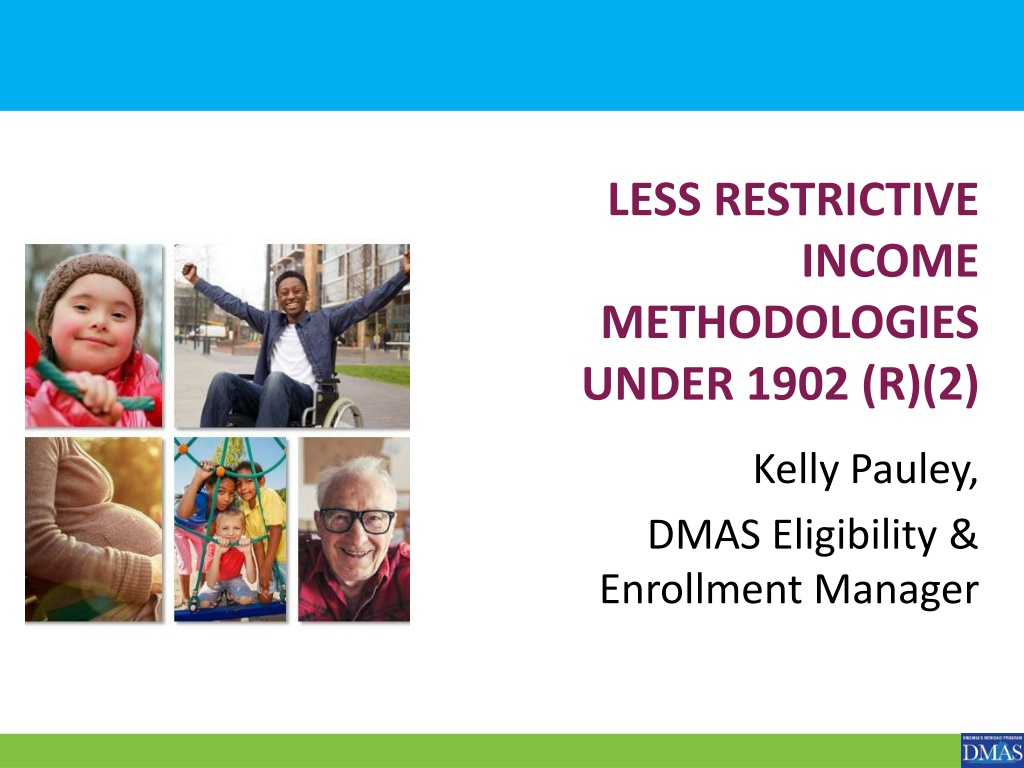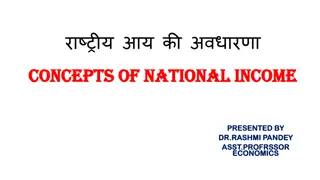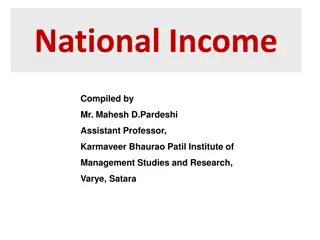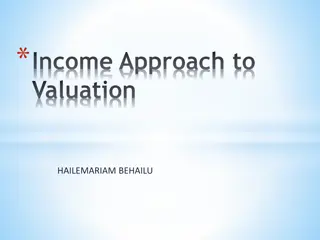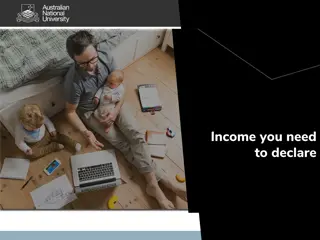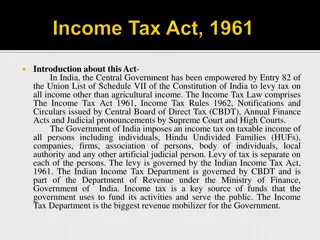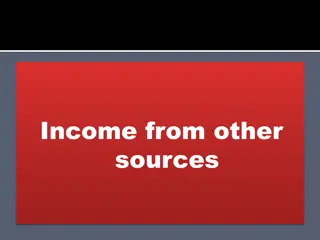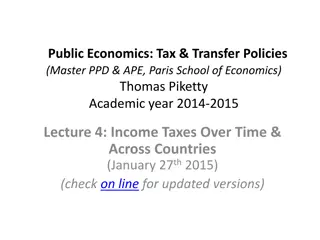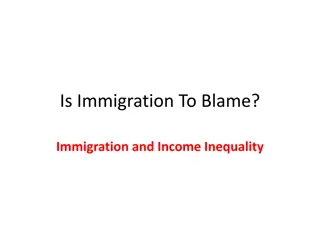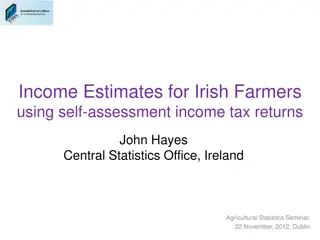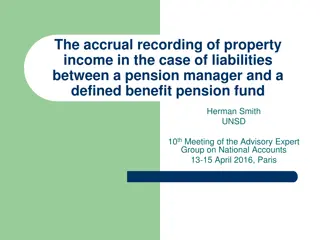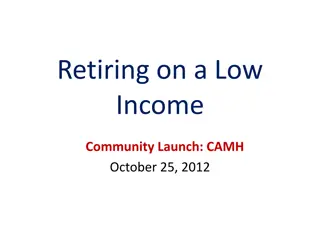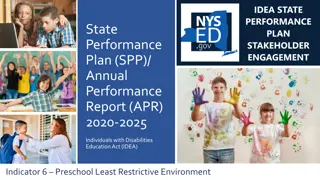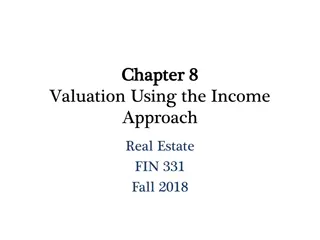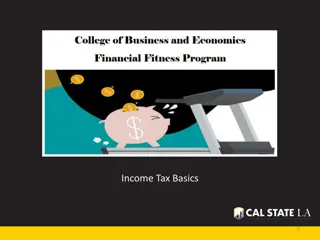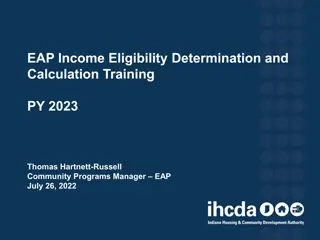Less Restrictive Income Methodologies under 1902(r)(2)
Background information on the implementation of less restrictive income and resource methodologies under section 1902(r)(2) of the Medicaid statute. This section allows states to utilize more flexible income and resource assessment methods for determining Medicaid eligibility, offering greater flexibility to disregard certain income and resources.
Download Presentation

Please find below an Image/Link to download the presentation.
The content on the website is provided AS IS for your information and personal use only. It may not be sold, licensed, or shared on other websites without obtaining consent from the author.If you encounter any issues during the download, it is possible that the publisher has removed the file from their server.
You are allowed to download the files provided on this website for personal or commercial use, subject to the condition that they are used lawfully. All files are the property of their respective owners.
The content on the website is provided AS IS for your information and personal use only. It may not be sold, licensed, or shared on other websites without obtaining consent from the author.
E N D
Presentation Transcript
LESS RESTRICTIVE INCOME METHODOLOGIES UNDER 1902 (R)(2) Kelly Pauley, DMAS Eligibility & Enrollment Manager
Background The Disability commission shared information received from Dennis Findley and Congressman Don Beyer s office. DMAS Eligibility Policy reached out to CMS for more information about the flexibilities described. On January 11, 2001, CMS published in the Federal Register a final regulation which allows States to take full advantage of the flexibility offered by section 1902(r)(2) of the Medicaid statute (use of less restrictive income and resource methodologies when determining eligibility for Medicaid). Prior to publication of the final regulation, States were greatly restricted in their ability to use less restrictive income methodologies under section 1902(r)(2). The final regulation became effective on May 11, 2001, giving States greater flexibility to use less restrictive income methodologies The Implementation Guide: Less Restrictive Resource Methodologies under 1902(r)(2) is simply conveying information about 1902(r)(2) disregards that were already in effect; the Implementation Guide itself did not do anything new. 2
Section 1902 (r)(2) What is section 1902(r)(2), and what does it do? 1902(r)(2) is the section number of a provision in the Medicaid statute, and is used as a kind of shorthand expression when describing what the provision itself does. States are required to follow the same rules and processes used by the most closely related cash assistance program to determine eligibility. For aged, blind or disabled individuals, those would be the rules of the Supplemental Security Income (SSI) program. For everyone else, those would be the rules of the former Aid to Families with Dependent Children (AFDC) program. Using the same rules as the cash assistance programs means the State starts with the same amounts and types of gross income and resources as the cash programs, disregards (i.e., subtracts) the same things from the person's gross income and resources (a process known as a "methodology"), and arrives at the same amount of countable income and resources that the cash assistance programs would if they were determining eligibility for their own programs. This section allows States to use less restrictive income and resource methodologies in determining eligibility for most Medicaid eligibility groups than are used by the cash assistance programs. This means that States can elect to disregard different kinds or greater amounts of income and/or resources than the cash assistance programs do. 3
Terms You May Need To Know Definitions Eligibility Group A classification of covered groups based on non-financial, resource, and income requirements used to evaluate and enroll individuals and to report statistical data for federal reporting. Home and Community-Based Waiver Services (HCBS) - A variety of in-home and community-based services reimbursed by DMAS that are authorized under a Section 1915(c) waiver designed to offer individuals an alternative to institutionalization in a medical facility based on the documented need for the service or services to avoid nursing facility placement. 4
Questions Are States allowed to apply 1902(r)(2) to individuals receiving home and community-based waiver services? While section 1902(r)(2) disregards can apply to individuals receiving home and community-based waiver services (HCBS), States cannot target such methodologies specifically to HCBS waiver recipients alone. People do not become eligible for Medicaid because they receive HCBS. HCBS are just that; services that a State can elect to provide to individuals who are eligible for Medicaid. To receive HCBS, though, a person must be eligible for Medicaid under one of the eligibility groups covered under the State Medicaid plan. If a State elects to apply section 1902(r)(2) disregards to a particular eligibility group, the disregards also applies to the individuals receiving the HCBS. A State cannot apply section 1902(r)(2) disregards only to individuals within a group who receive HCBS. The 1902(r)(2) disregards must be applied to the group as a whole. 5
Questions Can income or asset disregards within the medically needy group for aged, blind and disabled be different for people who are institutionalized and those who are not? Can States disregard just a specific kind of income (either earned or unearned)? For example, can States disregard just Social Security Disability Insurance (SSDI) income, or just interest income from savings accounts? No. Less restrictive income or resource disregards cannot be applied based on living arrangement or institutional vs. non-institutional status. (42 CFR 435.330) Yes, States can choose to disregard specific kinds of income. Either or both of the types of income in the example could be disregarded for an eligibility group under section 1902(r)(2). 6
Questions Can States also disregard income that is used for a particular purpose, such as income put into a medical savings account, or income a person uses to maintain or repair a home? Can States disregard just a specific kind of income (either earned or unearned)? For example, can States disregard just Social Security Disability Insurance (SSDI) income, or just interest income from savings accounts? Yes, a State can choose to disregard income that is used for a particular purpose. For example, a State could have a disregard (which could, but does not have to, be limited by dollar amount) for income used for home maintenance or repair. Yes, States can choose to disregard specific kinds of income. Either or both of the types of income in the example could be disregarded for an eligibility group under section 1902(r)(2). 7
Questions Can section 1902(r)(2) also be used to disregard income as part of the post-eligibility treatment of income process? The Medicaid statute limits the use of section 1902(r)(2) disregards specifically to determinations of eligibility. Since post-eligibility treatment of income is not part of an eligibility determination, section 1902(r)(2) disregards cannot be applied to income used in the post-eligibility treatment of income to determine patient pay liability. That means that even if we disregard the income at intake, it will still be included when determining patient pay. 8
How Many Individuals Would be Affected? More than 400,000 Medicaid recipients are aged (65+), blind or disabled. All could potentially be affected by changes in income disregards. In addition, other Virginia residents could become eligible for Medicaid. 9
DMAS continues to research ways to increase accessibility to Medicaid for working disabled individuals. Medicaid Works application process will be updated and streamlined during the next year. As recommended by the Governor s Introduced Budget, DMAS is working on operationalizing the requirement to allow Developmentally Disabled Waiver recipients to also enroll in Medicaid Works. 10
